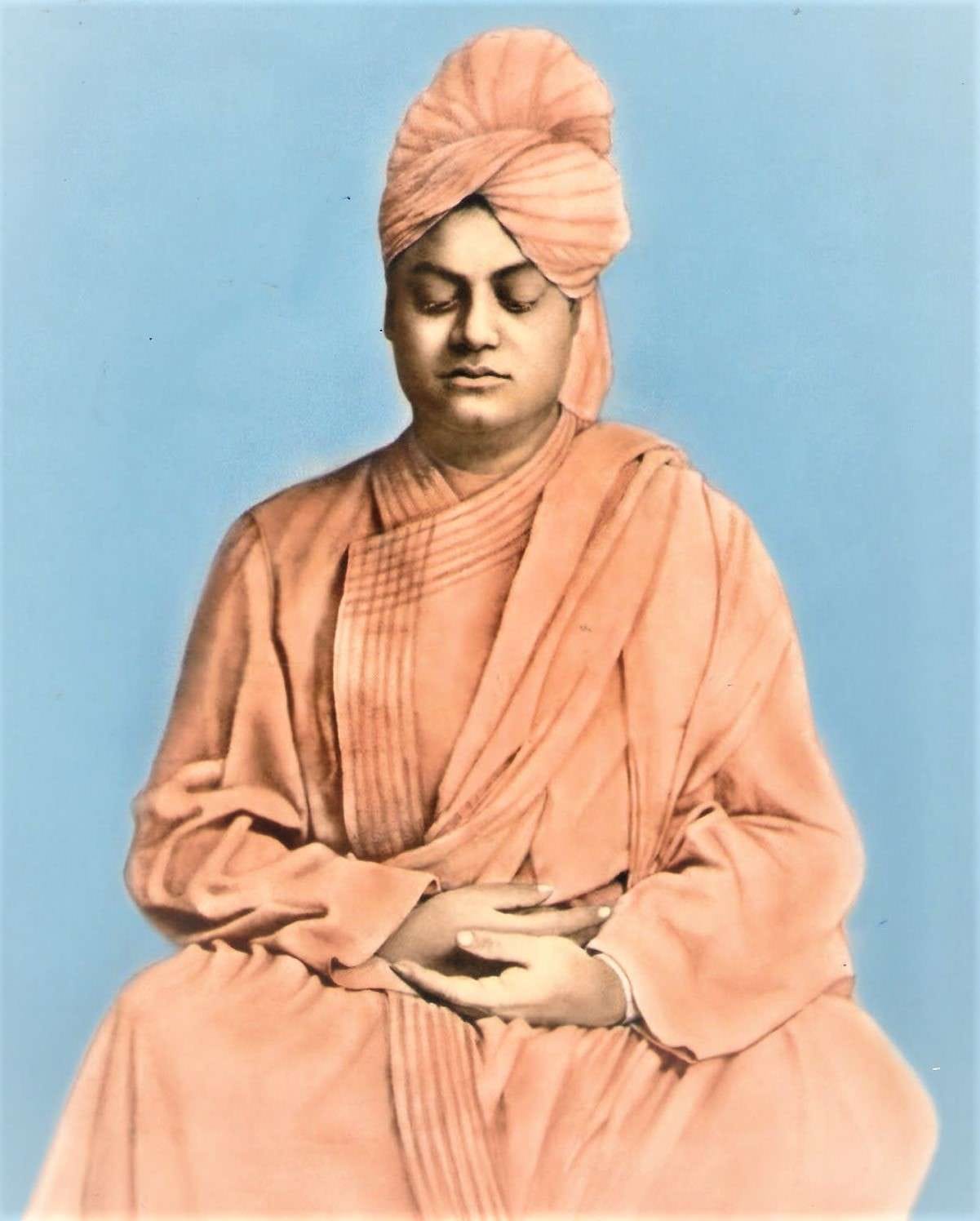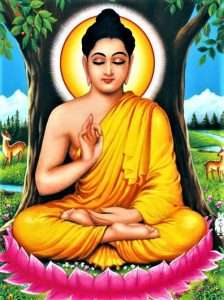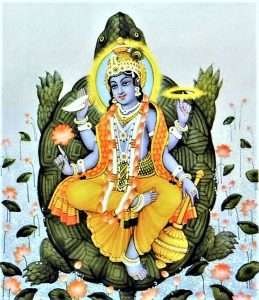Yoga Sutra of Patanjali

“Yoga Sutra” is one of the Darshan (one of the six schools of philosophy) in Hinduism. It is considered as an authoritative text on Yoga. Yoga Sutra was first addressed as “Raja Yoga” by Swami Vivekananda who wrote the first commentary on Yoga Sutra in English.
Meaning of Yoga in Yoga Sutra – In Yoga Sutra, Yoga is described as “cessation of the modifications of Chitta”.
Modifications of Chitta – The Chapter 1, Sutra 5, 6 says that there are five kinds of modifications of Chitta which are both painful and not painful. They are – Pramana (Right knowledge), Viparyaya (Indiscrimination; false knowledge), Vikapla (Verbal delusion), Nidra (Sleep) and Smriti (Memory).
Sutra – The Sanskrit word “Sutra” means principle, phrase, encoded message or clue. In Yoga Sutra, it means the principles on Yoga. Sutra also means thread. A thread is a basic element in a fabric. It is arranged in a way that the thread becomes the fabric. In the similar way the sutras in Yoga Sutra are arranged in specific connections to one another which makes the beautiful fabric of Yoga. Sutra is also an ancient form of writing like Sloka (verse), Mantra (syllables), Stotra (verse of prayer) and so on.
Patanjali – There is an unresolved debate about who Patanjali was. Some argue that Patanjali was an order of sages under which there were several Patanjali who explored Yoga and its various aspects. Other contend that Patanjali was an extraordinary individual who achieved the highest truth of Yoga and composed some masterpieces of texts like Yoga Sutra, Mahavasya on Sanskrit Grammar and Charakapratisanskrita on Ayurvedic Medicine. Patanjali is also believed to be an incarnation of mystical thousand hooded snake called “Sheshanaga” of Indian mythology. There are also so many legends about Patanjali’s birth, uniqueness, supernatural abilities and so on. According to some records, sage Patanjali was a highly scholar living in Varanshi. Undoubtedly, Patanjali was a genius of His time who entire humanity reveres. There is a very famous prayer dedicated to sage Patanjali at the starting of the commentary on Yoga Sutra of Patanjali called “Rajamartanda” by King Bhoja. This prayer is chanted by countless lovers of Yoga. The prayer runs as follows –
Sanskrit –

योगेन चित्तस्य पदेन वाचां मलं शरीरस्य च वैद्यकेन।
योऽपाकरोत्तं प्रवरं मुनीनां पतञ्जलिं प्राञ्जलिरानतोऽस्मि॥
Transliteration –
Yogena cittasya padena vacam malam sarirasya ca vaidyakena|
Yopakarottam pravaram muninam patanjalim pranjaliranatosmi||
Translation – I bow down to the superior sage Patanjali with my hands, who eradicated the impurities of mind through Yoga, of speech through grammar and of body through medicine.
Important commentaries on Yoga Sutra of Patanjali – There are some important commentaries on Yoga Sutra of Patanjali. Most of the commentaries in the past were done in Sanskrit and they are very authentic. The first commentary in English was done by Swami Vivekananda in 1896 when he was living in England. Hereunder are some of the important commentaries on Yoga Sutra of Patanjali –
Yoga Bhasya – By Vyasa
Tattva Visharadi – By Padnit Vachaspati Mishra (9th century)
Bhojavritti – By King Bhoj (11th century)
Yoga Vartika – By Vijnana Bhikshu (14th century)
Raja Yoga – By Swami Vivekananda (19th century)
After Swami Vivekananda wrote his commentary on Yoga Sutra called “Raja Yoga”, Yoga Sutra attained international acclaim. Later many writers made commentaries on Yoga Sutra. Some of those later important commentaries are –
Raja Yoga – By Swami Sivananda Saraswati
Four Chapters on Freedom – By Swami Satyananda Saraswati
At the present time Yoga Sutra has many commentaries available but most of the present commentaries are not reliable in as much as they contain the intellectualization of the words which are delusive in nature. Therefore, we should take into notice the words of enlightened masters.

Scheme of Yoga Sutra – Yoga Sutra is divided into four chapters. Each chapter includes many sutras which deal with many kinds of topics. The four chapters in Yoga Sutra are –
- Samadhi Pada – It contains 51 Sutras which deals with topics such as different kinds of Samadhi, obstacles in meditation, five kinds of Vritti and methods of control, Ishvara, AUM and methods to experience Samadhi etc.
- Sadhana Pada – It contains 55 Sutras which deals with topics such as Kriya Yoga, the five afflictions, the methods to cease the afflictions, Yama, Niyama, Asana, Pranayama, Pratyahara and its advantages etc.
- Vibhuti Pada – It contains 56 Sutras which deals with topics such as Dharana, Dhyana and different kinds of Samyama on external objects and psychic powers etc.
- Kaivalya Pada – It contains 34 Sutras which deals with topics such as Dharmamegha Samadhi, Ritambhara Prajna and state of freedom (Kaivalya) of a Yogi.
Each chapter is linked with another chapter. Each Sutra in each chapter has a very close connection with the following and preceding sutra. The sincere study of each chapter is very important to understand the mechanism of Yoga Sutra.
Eight limbs in Yoga Sutra – Among all these various topics, the eight limbs of Yoga in chapter second is very important which is similar to the eight limbs explained in Kurma Purana. Chapter 2, Sutra 29 of Yoga Sutra says – “Yama niyama asana pranayama pratyahara dharana dhyana samadhi astau angani” which means “Yama, Niyama………….Samadhi are the eight limbs of Yoga”. They are –
- Yama (Self-restraint) – Ahimsa (Non-injury), Satya (Truth), Asteya (Non-stealing), Brahmacharya (Celibacy) and Aparigraha (Non-possesiveness).
- Niyama (Personal observances) – Saucha (purity), Santosha (contentment), Tapas (austerities), Svadhyaya (study) and Ishvarapranidhana (surrender to God);
- Asana (Posture of meditation)
- Pranayama (Restraint of breath)
- Pratyahara (Control of senses)
- Dharana (Concentration)
- Dhyana (Meditation)
- Samadhi (Super-conscious state)

Yama and Niyama are the most formidable disciplines to relax the senses and purify the mind. Asanas steadies body. Pranayama makes the body and mind light and helps to control, regulate and coordinate the subtle forces within the body. Pranayama controls also the life-force which in turn develops the Sattva Guna (state of peace and equilibrium). Through the regular practice of Pranayama mind becomes fit for concentration. Pratyahara curbs the senses and turn them inward. Dharana concentrates the mind on the object of practice. Dharana develops into Dhyana and Dhyana into Samadhi. There is hair like distinction between Dharana, Dhyana and Samadhi. Dharana, Dhyana and Samadhi together on different objects brings different kinds of psychic powers to a Yogi which is described in detail in the Chapter 3 of Yoga Sutra. A sincere Yogi rejects psychic powers and continues his concentration on the object. The one-pointed and unshaking concentration carries a Yogi towards the higher and higher states of Samadhi such as – Savitarka Samadhi, Nirvitarka Samadhi, Savichara Samadhi, Nirvichara Samadhi, Sananda Samadhi and Sasmita Samadhi. All these different states of Samadhi do not bring liberation but they are proof of gradual development of a Yogi on the path. At the highest state of Samadhi, the Yogi experiences Kaivalya (Nirbija Samadhi – transcendental state). The word Kaivalya means the final state which is also used in Buddhism to represent the state of Nirvana. Nirvana and Kaivalya are the same thing. Now ignorance being destroyed he enjoys the bliss of his own true nature and independent. This is the goal of human life.
Conclusion – Yoga Sutra is an excellent treatise for people from all backgrounds. It provides a detailed and systematic approach to understand human mind and evolve. The main method in Yoga Sutra is concentration of mind on one object in order to create a new wave which subside other natural waves in mind. In course of time the natural waves completely calm and only new wave continues. In the end even the new wave is left then the mind itself becomes the object – mind meditates on mind. This state brings state of Samadhi which eventually culminates into Kaivalya (liberation). In this way Yoga Sutra brings a scientific approach to evolution which opens doors to seekers from all parts of the world. This is why Swami Vivekananda taught Yoga Sutra in the west as this was the most appropriate means to convince people for higher goals of life.
With Love and Gratefulness (Founder Rohit Kumar)
Source – Words of Swami Sivananda, Swami Satyananda, Swami Vivekananda and personal study.
Hari Om Tat Sat!















